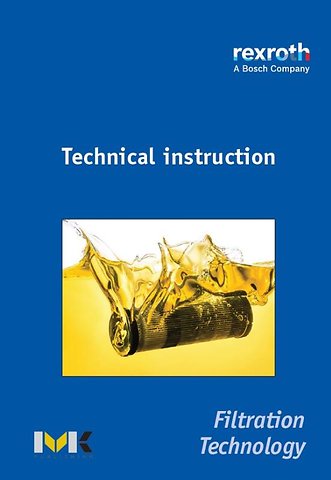Filtration Technology
Gebonden EN 2020 1e druk 9789462717756Samenvatting
Hydraulic and lubrication systems have developed significantly in the past sixty years. The range of applications continue to expand. In modern systems, the application of proportional valves is a particularly important stimulus for the application of increasingly complicated and more accurate hydraulic drive systems.
With the availability of more accurate production techniques that enable the possibilities of minimal tolerances, the operating pressures have more than doubled in the last 25 years. Pressures of up to 420 bar (42 MPa) are regarded as almost normal, and when it concerns clamping and stamping, pressure of 800 bar (80 MPa) are no longer unusual.
The very narrow dynamic clearances of only a few micron (1 μ = 0.001 mm) between moving parts, mean that the fluid cleanliness of hydraulic and/or lubricating systems are afforded the highest priority.
Better cleanliness levels, will improve system reliability. Some of the important points for this are: the cleanliness (= concentration of solid particles in function of their size), the water and air content, the additive composition, temperature, viscosity, acidity, and the presence of micro-organisms.
This makes it necessary to choose the correct measurement equipment, such as the right technology for particle counters, as well as the components required for conditioning such as filters, coolers, heaters, dryers and sometimes also biocides.
This Technical Instruction goes into the concept and technologies that play a role in keeping the fluid clean, dry and air free.
Specificaties
Lezersrecensies
Inhoudsopgave
Introduction
Graphical symbols ISO 1219
1 General hydraulics
1.1 What is hydraulics?
1.2 Energy transmission in a hydraulic installation
1.3 Volumetric flow rate (qv) and pressure (p)
1.4 Hydrostatics
1.5 Hydraulic power 10
1.6 The structure of a hydraulic system
1.7 Schematics
2 Hydraulic fluids, cavitation and diesel effect
2.1 Viscosity
2.2 Additives
2.3 Classification of hydraulic fluids according to types of applications
2.4 Cavitation
2.5 Diesel effect
3 Consequences of contamination by solid particles
3.1 Size of particles
3.2 Consequences for the system
4 Sources of solid contamination and countermeasures
4.1 User introduced
4.2 System generated
4.3 Environmental ingression
4.4 Breaking the chain reaction of wear
5 Cleanliness level of a fluid
5.1 Cleanliness level according to ISO 4406:1999
5.2 Sampling and particle counting
6 General filters
6.1 Functional principle of filters
6.2 Filtration media and structure
6.3 Filters: terms, ratings and performance
6.4 What filter fineness?
7 The filter element
7.1 Structure of the filter elements
7.2 Antistatic construction
7.3 Bypass valve
8 Filtration concepts and filter design
8.1 Filter concept in the hydraulic system
8.2 Filter designs
8.3 Intake (suction) filter
8.4 Pressure filter
8.5 Return filter
8.6 Bypass filter
8.7 Air filter, filling filter and safety (last chance) filter
8.8 Filling / Flushing Unit
8.9 Service life indicators for filters
9 Water, air and thermal contamination
9.1 Water contamination in oil and it’s consequences
9.2 How does water enter a system and how can this be prevented?
9.3 Air contamination in oil and the consequences thereof
9.4 Thermal contamination
10 Maintenance Management
10.1 Particle counting and oil analysis
10.2 Flushing
10.3 Power flushing
10.4 Maintaining logbook
10.5 Examples of oil analysis with cleanliness level in ISO code
10.6 Prevention is better than a cure
11 Standards for testing filter elements
11.1 The bubble-Point-test according to ISO 2942
11.2 The Multi-Pass filter test
12 Determining the desired system cleanliness and filter fineness
12.1 Determination of the desired cleanliness according to the BFPA
12.2 The pressure difference over the filter
12.3 Cold start
12.4 ISO 4413
Rubrieken
- advisering
- algemeen management
- coaching en trainen
- communicatie en media
- economie
- financieel management
- inkoop en logistiek
- internet en social media
- it-management / ict
- juridisch
- leiderschap
- marketing
- mens en maatschappij
- non-profit
- ondernemen
- organisatiekunde
- personal finance
- personeelsmanagement
- persoonlijke effectiviteit
- projectmanagement
- psychologie
- reclame en verkoop
- strategisch management
- verandermanagement
- werk en loopbaan
